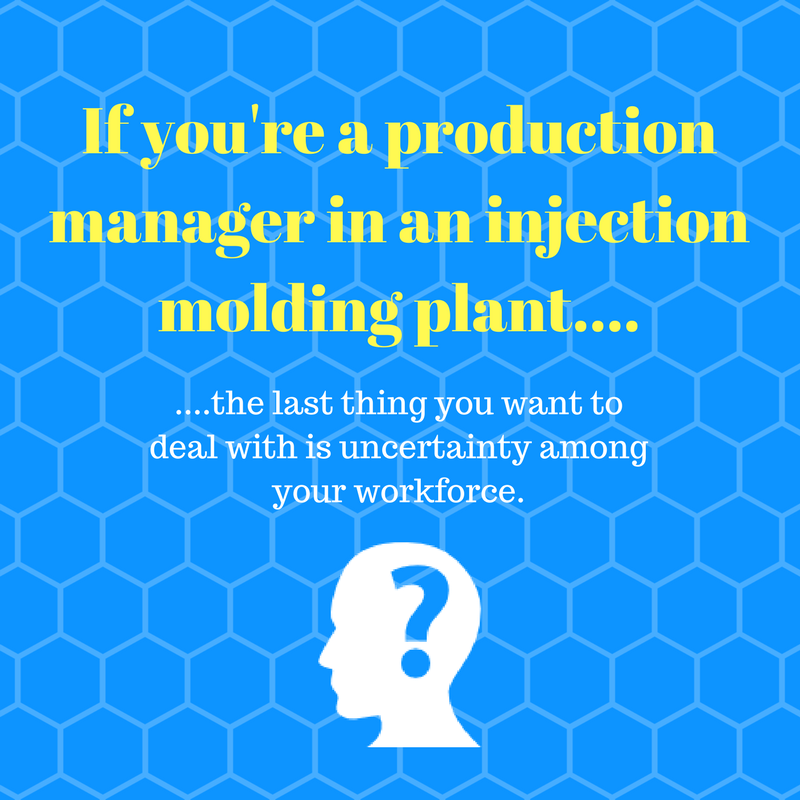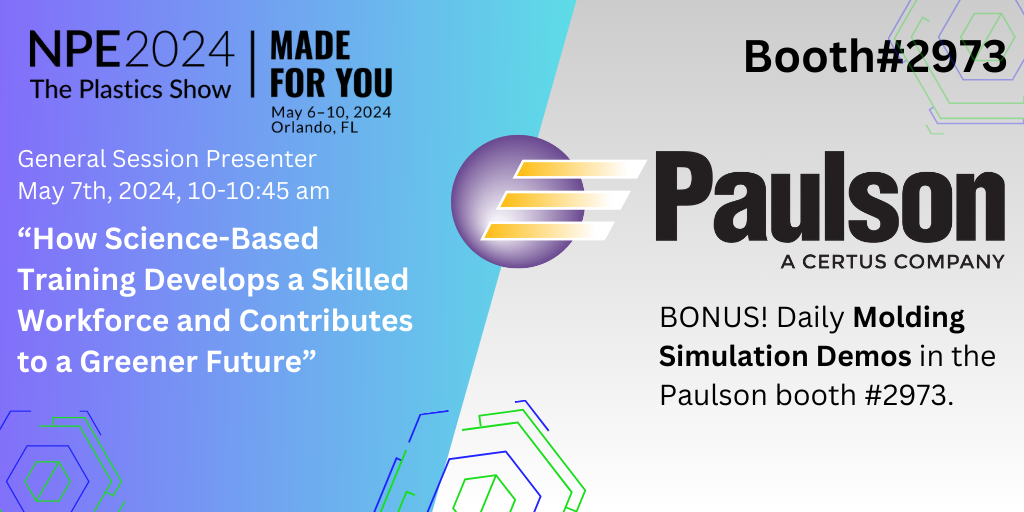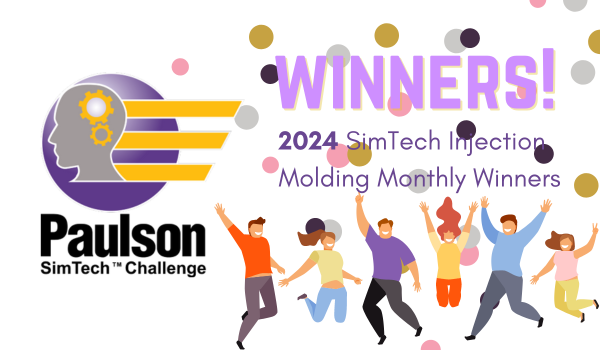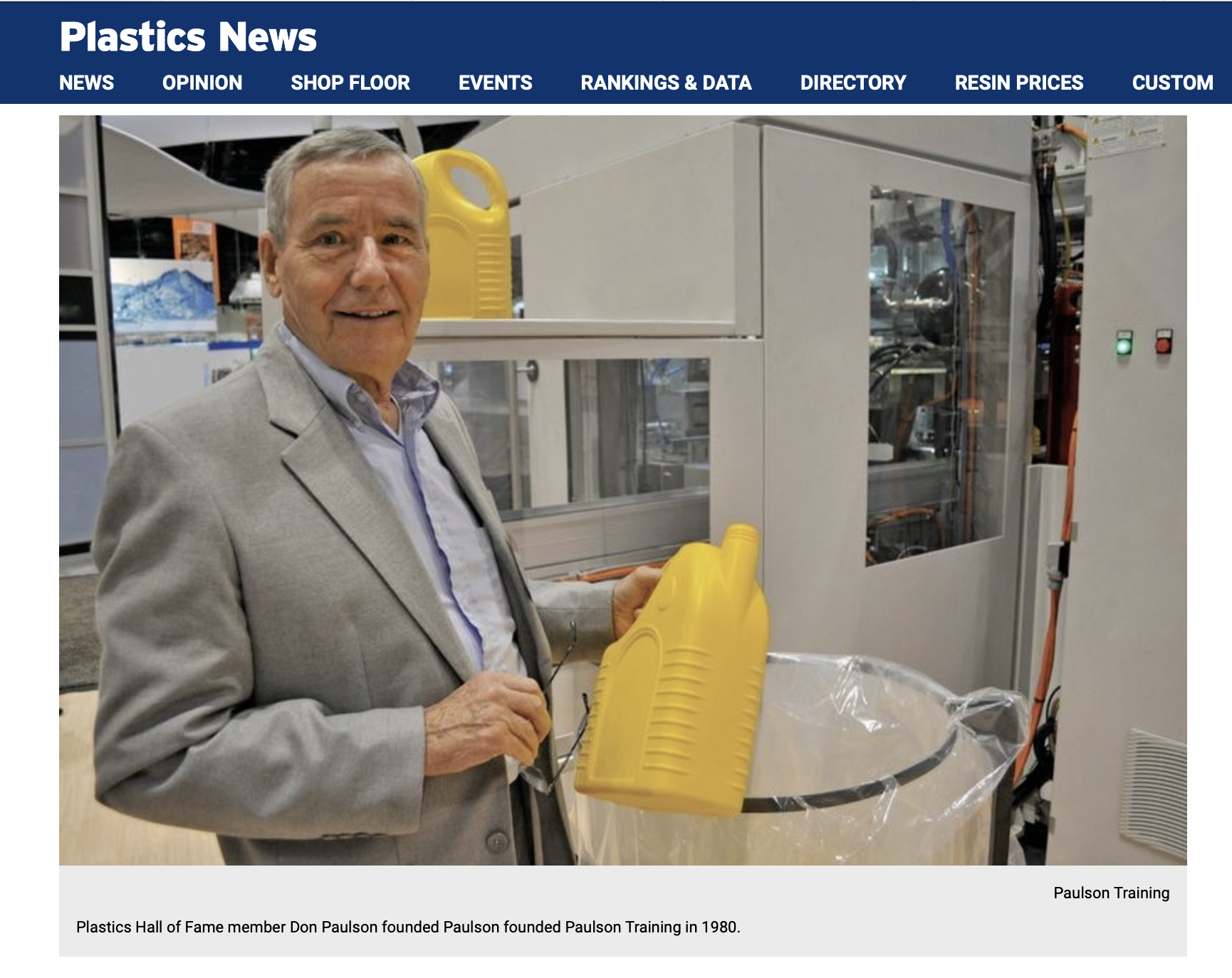From Merriam-Webster Dictionary
wildcard – noun : [wahyld-kahrd] a person or thing that could affect a situation in a way that cannot be predicted ; an unknown or unpredictable factor.

…And what the heck does that have to do with your injection molding operation?
Everything actually. Unpredictable = Bad, Predictable = Good.
The four primary plastic variables are widely used as a very effective method of teaching the injection molding process. A related and often used phrase in injection molding, is “from the plastic’s point of view” (PPV). Both have been adopted throughout the injection molding industry and for good reason. They simplify an inherently complex process and explain gently, but scientifically, how to make a good plastic part with an injection molding machine and a mold – a part your customer will buy. Because if they won’t buy it, you buy it and you’ll buy it at 3 times the price.
A Completely New Training Approach
Both of these concepts, the four variables and PPV, originated out of research done by Don Paulson in the mid 1960’s at what was then called General Motors Institute (GMI) in Flint, MI (now
Kettering University). Don Paulson was the professor who set up the plastics research and training curriculum for students at GMI. Running the
plastics department gave him the enviable task of setting up a plastics research lab from the ground up.
The result was, for it’s time (1960’s), one of the most advanced plastics processing research facilities in the world. All the molding machines were fully instrumented with in-mold transducers and recording equipment. This lead to the groundbreaking insight that the plastic reacts to just 4 things during the molding process – heat, flow, pressure and cooling. This was the birth of scientific molding and turned molding from an art (learned only through years of experience) to a science that could be taught in a fraction of the time and with much better results.
Fast Forward to Today
All of the top injection molding companies now embrace a scientific approach to injection molding. Why? Because it adds production floor discipline to an environment that can be chaotic and  undisciplined. An environment full of “wildcards”. Those wildcards would be employees who have not had the opportunity to be trained in the 4 variables approach and PPV molding.
undisciplined. An environment full of “wildcards”. Those wildcards would be employees who have not had the opportunity to be trained in the 4 variables approach and PPV molding.
If you are a production manager in an injection molding plant, the last thing you want to deal with is uncertainty among your workforce.
Are they all speaking the same injection molding “language”? Do they understand the 4 variables? Can they look at the process from the inside, as plastic molecules? If not, they fall in the “wildcard” category – as Merriam-Webster says “a person that could affect a situation in a way that cannot be predicted”. Ouch. And an untrained workforce often will metastasize into a bigger untrained workforce. Train your people or they’ll train themselves.
It All Comes Down to Teaching and Training
This goes on every day in injection molding plants across the country. It all comes down to one basic problem – teaching and training. The plastic’s industry, unfortunately, does not have a good  “farm team” system. Companies, for the most part are left to their own devices to build a trained workforce that minimizes or eliminates unpredictability. The top 20% of injection molders know this and are proactively doing something about it.
“farm team” system. Companies, for the most part are left to their own devices to build a trained workforce that minimizes or eliminates unpredictability. The top 20% of injection molders know this and are proactively doing something about it.
Paulson Training has been conducting a long running survey of the state of training in the plastics industry
We’ve gathered over 10,000 responses and growing. The top “training problem”? No Formal Training Program – 40% of respondents. This means just under half of all injection molders have not embraced the idea of “growing their own” skilled work force with in-house training and periodic refresher training. The second biggest training problem? Troubleshooting knowledge – 33%. This is a recipe for running a production floor that goes from crisis to crisis, from fire to fire. And that is pretty much about as unpredictable as it gets.
Implementing Systems is what Succeeds in the Long Run
 Every manager inherently knows that they need to minimize unpredictability. Companies have systems for tool maintenance, machine maintenance, quoting jobs, accounting, customer follow-up and so on. But somehow systems for training the workforce simply don’t exist and are not widely embraced.
Every manager inherently knows that they need to minimize unpredictability. Companies have systems for tool maintenance, machine maintenance, quoting jobs, accounting, customer follow-up and so on. But somehow systems for training the workforce simply don’t exist and are not widely embraced.
Wildcards on your production floor are not a good thing. Yes, there is some unpredictability in your machines and tools. But you have maintenance procedures to minimize that.
The wildcard factor embedded in your production floor workforce, the unpredictable factor, is not something that is addressed by the majority of molders.
The Vast Majority of Employees Want to do a Good Job
If your employees are your most valuable asset (and most companies say that they are), they deserve the knowledge and skills to do the job they get paid to do. Paulson has been in the plastics training business for over 35 years. What was true 35 years ago is still true today. The vast majority of employees want to do a good job. They want to be trained. They don’t want to be wildcards.
If management says that training is too expensive (and many do), the expense of keeping a workforce untrained is monumental by comparison. As the saying goes “What if I train my employees and they just leave?” What if you don’t train them and they stay? Your in-house training system largely negates that argument.
Either the company is going to train their production floor or their production floor is going to train itself
Which one do you think is more expensive?





